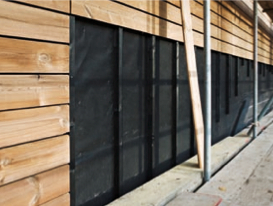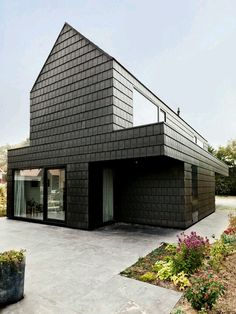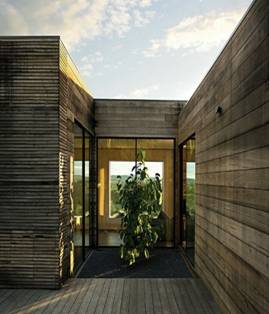External Wall Insulation Retrofit and Timber Cladding
by Mark Row
 House Design Refurbishment Project
House Design Refurbishment Project
If you are having problems heating up or cooling down your home interior, and just cannot deal with high monthly bills throughout the year, it may be the perfect time to consider commencing a complete house refurbishment project. Although this may seem too costly at first, you will notice that it is a long term investment that can pay itself off in the years to come. Not will it only prolong the lifespan of the entire construction, but it will also raise the overall quality of life, not to mention the great money savings that will become visible in the near future. Now, what you need is a detailed insulation plan which will be based on accurate assessments and detection of potential weak points in your exterior walls structure that need to be taken care of. If your home is not properly insulated and there are some difficulties in adding internal insulation, then retrofitting external wall insulation and timber cladding must become a part of your refurbishment project. But, let’s start from the beginning and consider some basic steps that should be followed and some vital consideration that need to be taken into account.
If you are looking for a functional solid wall external cladding structure that will last for many years and be able to withstand temperature changes and other damaging exterior effects (such as moisture or damp), then your external wall should include a number of layers which, when properly combined, will provide a satisfying overall result. The structure should include a support system, such as timber battens, fixing battens, a layer of insulation, preferably a breather membrane layer and the chosen type of cladding, such as tiles or slates and timber cladding. Now, the order of the layers will depend on the cladding system chosen and the efficiency and functionality of the structure from the type of external wall insulation added, but let’s take it one step at the time.
-
Support System
The support system is there to hold the cladding in position why it must be strong and resilient enough to bear the load of the cladding. Many options are available, including brackets, support beams or timber battens, all depending on the type of the cladding chosen. Apart from the fact the supporting framework must be able to bear the cladding, it also needs to be suitable for the exterior wall insulation added, meaning that it should be deep enough for the insulation material to be installed and must be able to minimize thermal bridges occurrence.
-
External Insulation
Probably the most important part of your cladding system is proper external wall insulation system. It has many benefits, starting from strengthened the wall structure, protection from moisture, penetrating and raising damp, significant money savings from lesser usage of energy through electrical heating and cooling devices and lower carbon footprint.
When choosing external solid wall insulation, there is more than one option available. When opting for one, you should keep in mind its properties and insulation performance (shown through typical U and R values of the material), but also the installation process, since some materials are more flexible and thus can be more easily positioned than others. One such example are rock wool insulation slabs that can be installed tightly around the supporting structure, thus minimizing the risks of gaps appearing that can affect the effectiveness of the insulation material. On the other hand, if you want to opt for some type of rigid wall insulation that is fixed to the wall using adequate adhesives, then your choice could be between the Kingspan K5 phenolic board and Celotex GA400 PIR board, among others, that are very rigid yet lightweight and thus easy to transport and handle.
-
Cladding
When it comes to the cladding material, you could either opt for tiles or slats or more traditional timber cladding. If you are looking for an easy-maintenance solution, then clay, concrete or cement tiles should be your first choice, since they are not only easily installed onto the timber battens and the supporting framework, but are also very durable and aesthetically pleasing.


External Tile Cladding Timber Cladding
Timber cladding is one of the most commonly used cladding option, since it offers versatility and nice and elegant texture, apart from its ecological benefits found in the fact that it is completely recyclable. Depending on your preferences, you could opt for vertical, diagonal, horizontal boards or shingles. Either way, the timber cladding must be properly protected from water penetration that could damage the structure, by installing proper breather membranes and drained cavities, alongside proper ventilation and drainage.
Bearing in mind all the above mentioned, one can conclude that external wall insulation retrofit is a great option always when external walls are not in any other way insulated, resulting in significant heat loss and moisture problems, but also when the alternatives found in interior or cavity wall insulation are either impractical, involve some sacrifice, such as reducing available living space or are simply not enough in the words of the thickness and effectiveness of the insulation material installed.
Take a look at the other external wall insulation products we offer and pick the best one for your solid wall insulation retrofit. Feel free to seek advice from our experts by email, live chat or phone. You are welcome to leave a comment or share the article.



















































































































